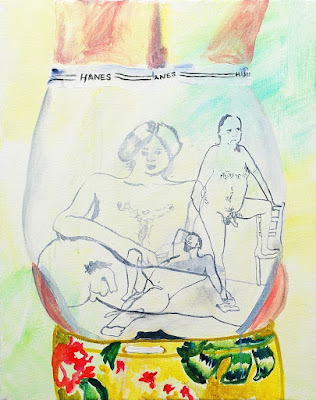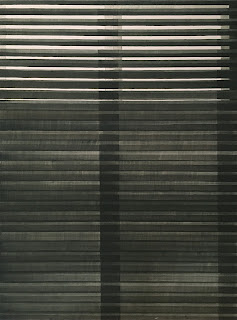I curated a show at Heaven Gallery titled Not Knowing. It runs until October 14th, 2017. There is an artist talk on Sunday, October 1st at 1pm.
You can see photos here: https://www.flickr.com/photos/nvaughn/sets/72157685492414691
Writing is a process of dealing with not knowing, a forcing of what and how. We have all heard novelists testify to the fact that, beginning a new book, they are utterly baffled as to how to proceed...At best there is a slender intuition, not much greater than an itch.
--Donald Barthelme, Not Knowing
An artist embarks on her task without knowing what to do. There is some kind of energy that she is manifesting as she works, and it has a larger form. To know in advance as to what that form is, is to reduce it.
--George Saunders on Not Knowing
When inspiration strikes, it feels as if it comes from outside oneself. The process of making art involves a kind of subtle foreknowledge, an awareness of the work before it exists, and communication with neurological processes deep within the wordless mind. In the search for answers, an artist finds more questions lingering in that uncomfortable place of not knowing. The result of that discomfort, according to Barthelme, is the possibility that the artist might show the viewer, “the as-yet-unspeakable, the as-yet unspoken.”
Good art is hard. An artist can over-think and become paralyzed, but to Barthelme, “Problems are a comfort” because it is through problem solving, or making choices, that the artist moves from not knowing to finding a unique and defining style. Take for example, the story of one of Chicago’s great culinary achievements-- the Italian beef sandwich. Essentially, poor entrepreneurs on Maxwell St. figured out how to turn salt, cheap cuts of meat, and stale bread into an inexpensive, delicious meal. They were constrained by cost and by what ingredients were readily available. Similarly an artist responds to and creates constraints, imposing limitations or rules within the work. Paradoxically, it is within these constraints where freedom and innovation are found.
Being an artist is to live within a series of constraints and limitations. Today, an artist must make her way in the world within structures that are in the process of collapsing, dissolving, or becoming irrelevant. The rigid gender roles of the past, normative definitions of family and caretaking, are all being renegotiated. The particular methodologies parent artists (and female parent artists in particular) have to come up with in order to continue to work while parenting are not yet standardized or obvious. They must be hammered out individually. The artists in this exhibition make a different kind of work-- thoughtful and contemplative art made alongside working, teaching, and raising a family. Overlapping limitations and opportunities define their style. They embrace “not knowing” in the way they make their work, but also in the uncertainty and the freedom of living in this state. They are: Claire Ashley, Karen Azarnia, Clarissa Bonet, Robin Dluzen, Dan Devening, Andreas Fischer, Celeste Rapone, Melody Saraniti, Ann Toebbe, and Noah Vaughn.


http://www.heavengallery.com/node/2524































